You may be drawn you may be drawn to full time vandwelling by the idea of living in a minimalistic way that’s more in tune with the environment. But once you’ve moved into your diy camper van and are face-to-face with your own trash every day, you’re hit by some hard truths about modern society.
We generate an insane amount of waste in modern society. There are all kinds of disheartening facts and statistics out there – like how the average American throws away nearly 7 pounds of trash per day. Or how we don’t recycle 91% of the plastic that we use. Or how 8 million tons of plastic waste ends up in our oceans each year, where it pollutes the environment and contaminates the food chain.
If you’re already eco-conscious you may be thinking, “I’ve heard all this and I get that this is important, but this doesn’t apply to me. I do my part and recycle everything I can!”
Not so fast. The sad truth is that throwing something in the recycling is not a guarantee that it will be recycled. That single-use plastic bottle you just tossed in a blue bin could very well be on its way to a landfill.
Yes, you read that right. You may think you’re being a good steward of the environment by recycling your disposable plastic. But the reality is that all that plastic you’re throwing in the recycling may not actually end up being recycled.
And plastic that ends up in a landfill can take up to 500 years to decompose, and in the process leaks toxic chemicals and microplastics into the soil and groundwater. Much of this unrecycled plastic is single-use, disposable items.
Our Single-Use, Throwaway Culture is a Huge Problem. So What Do We Do About It?
Resist the culture. Take steps in our lives to Reduce our usage of single-use, disposable items, so that we use less in the first place. Look for ways to Reuse whatever we can, so that fewer items end up in the trash. Then if we still have waste, be sure to Recycle what we can, and do it properly.
Remember the three “R’s?” Most people forget that Recycling is the third R. We need to Reduce and Reuse first.
Going fully waste-free may not be easy in today’s world, but taking even one small step – or challenging yourself by participating in Plastic Free July – goes a long way towards reducing your waste footprint.
In this post, we go over our top 13 tips for reducing your single-use waste and living a more eco-conscious life on the road.
1. Ditch Plastic Shopping Bags for Reusable Ones
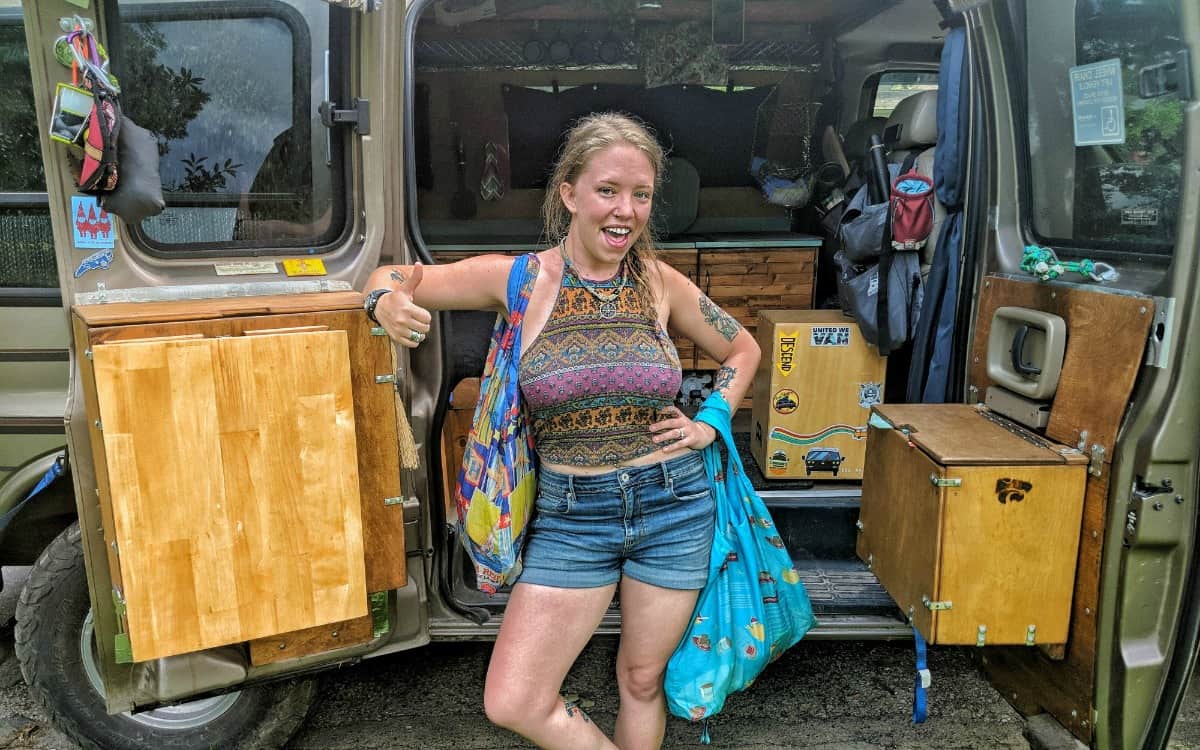
This is an obvious tip, but it’s still worth mentioning. Telling the cashier, “No thanks, I brought my own bag,” is one of the easiest ways to reduce your plastic waste. And you don’t have to go out and buy anything extra if you don’t want to. Backpacks, beach totes, gym bags, or oversized purses all work great. Some stores – like Trader Joe’s, Whole Foods, and Target – even offer discounts if you bring your own bag.
What’s so bad about plastic shopping bags?
For starters, they’re made from fossil fuels. And the oil it takes to make only 14 plastic bags would produce enough gasoline for you to drive an entire mile in your van. That’s a lot of oil to make something that’s used for an average of 12 minutes.
Even though plastic bags can be recycled at many grocery stores, hardly anyone does it. At the landfill, they leach harmful chemicals into the ground – that is, if they’re not carried away by the wind. In fact, many plastic shopping bags make their way to the ocean, where they kill over 100,000 marine animals each year and end up in the bellies of others.
This isn’t just an environmental problem – it’s an economic one too. Some cities spend over $1 million each year on litter removal – the bulk of which are plastic bags. And that cost is passed on to taxpayers. The overall cost of buying a couple of reusable cloth shopping bags is small in comparison.
When You Live in a Van, It’s Easy to Get Rid of Shopping Bags Altogether
Luckily, the very nature of vanlife makes it super simple to completely skip the shopping bags just about everywhere. We’re notorious for forgetting to bring reusable shopping bags into stores – but it doesn’t matter because we take our groceries straight out to our kitchen. After we check out, our food items just go right back into the cart and we put everything away out in the parking lot. No need for bags at all!
2. Bring Your Own Mesh Produce Bags to the Store

This goes hand-in-hand with reusable shopping bags. If you like to bag your produce, you can completely avoid plastic waste by bringing your own mesh produce bags. Or, don’t use bags at all and put your produce straight into the cart!
While we’re talking about produce, don’t forget that buying from farmer’s markets and produce stands not only helps avoid plastic packaging – it supports local farmers, too!
3. Invest in Reusable Drinking Receptacles
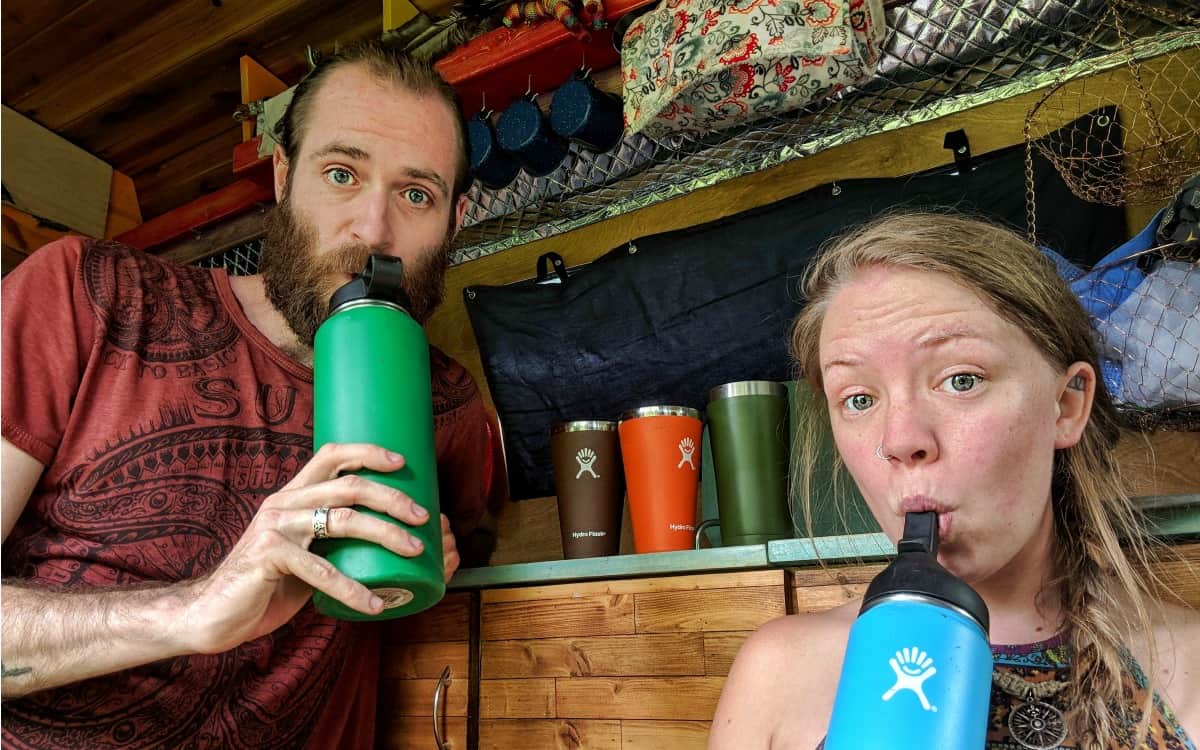
This is another really easy way to reduce your waste, protect your health, and do a solid for the environment. From water bottles to coffee containers to beer growlers, there’s a reusable receptacle available for just about anything you can drink.
Even if you don’t have a water system or a coffee maker in your van, you can still keep yourself hydrated and caffeinated on-the-go. Most gas stations and coffee shops will gladly let you use your own container for coffee – they may even applaud you for it. You can usually fill up your water bottle anywhere there’s a sink or a soda fountain. And you can fill that growler at the local microbrew.
We use stainless steel Hydro Flask water bottles, which are vacuum-insulated so they keep our water ice-cold for hours. We also have vacuum insulated stainless steel coffee containers and tea cups for our hot beverage needs.
You Can Have a Major Impact By Drinking Only from Reusable Containers
Most plastic water bottles don’t get recycled. Even the ones that do may still end up in a landfill (or the ocean). And disposable coffee cups generally aren’t recyclable at all, since they’re typically lined with plastic (don’t even get us started on styrofoam).
Sticking with your own reusable beverage containers is one of the most significant things you can do to cut down on your overall waste – and not just because of the whole recycling thing.
The issues surrounding plastic water bottles are bigger than the bottles not being recycled.
For starters, the actual production of bottled water is monumentally wasteful. A tremendous amount of fossil fuel goes into producing, transporting, and storing bottled water. And between making the packaging, the labeling, and the water itself, it takes more than six liters of water to produce just one liter of bottled water.
That’s six times more water than you would use if you just filled up a Hydro Flask at the tap.
4. Kick the Ziploc Habit with Bee’s Wrap

Beeswax wrappers like Bee’s Wrap or Khala Cloths are the perfect alternative to ziploc bags, plastic wrap, and tinfoil. They’re made of pieces of organic cotton coated in beeswax, and they work wonders for storing cut vegetables, cheese, homemade bread, and many other things you would normally wrap in some sort of plastic (beeswax wrappers are not recommended for raw meat, but you can put meat in a bowl and use the beeswax wrappers to seal the top).
There’s nothing more infuriating than storing something in plastic for just a few hours, then throwing the plastic away. Americans throw away over 20 million ziploc and sandwich baggies per day – a huge amount of waste.
Using a beeswax wrapper is the perfect solution to this problem. It’s all-natural, washable, and reusable for up to a year. When it’s worn out, simply chuck it in the compost. Plus, it works really, really well.
When you wrap food in a beeswax wrapper, the wax coagulates together to form an airtight seal. And we’ve found that since you’re naturally squeezing air out of the wrap, the vegetables we store in them stay fresher for longer. Cut avocados that we wrapped in Bee’s Wrap come out looking green and fresh – whereas avocados that we’ve stored in Ziploc bags typically look brown and nasty by the next day.
5. Tell Those Plastic Straws to “Suck it!”
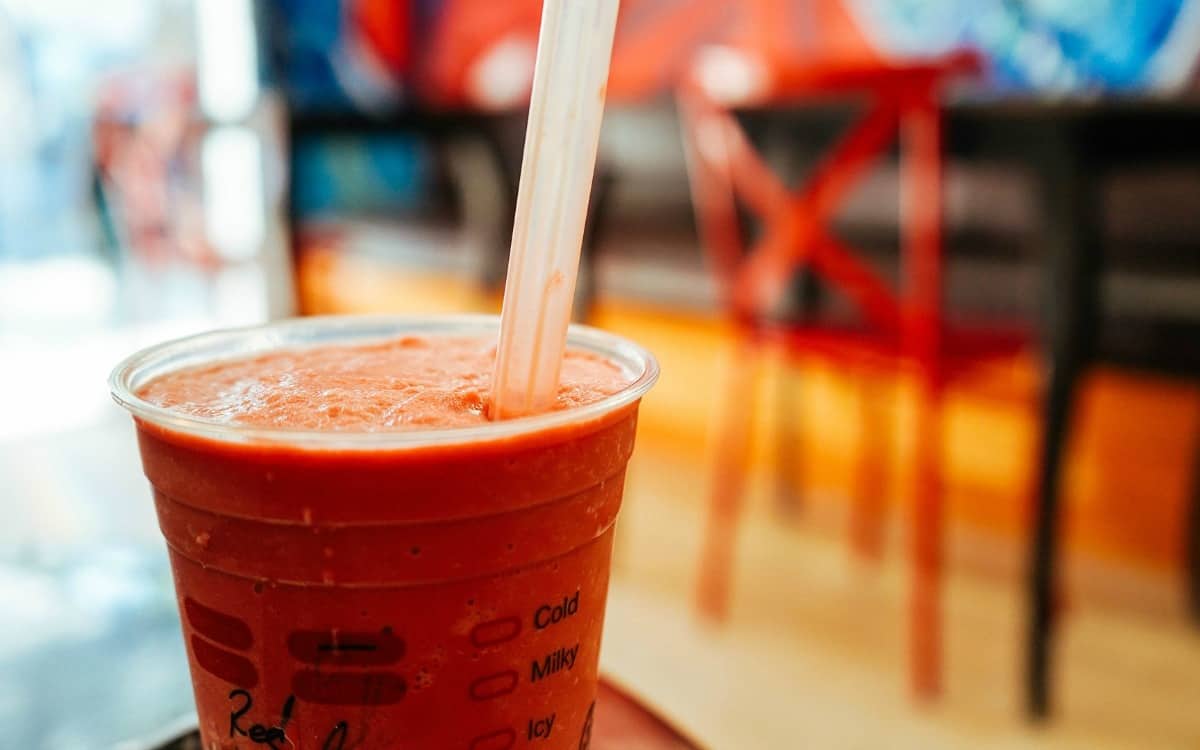
Plastic straws are everywhere, and they’re a problem. If you order a beverage at a restaurant, you automatically get a straw. And even if you don’t use it, chances are it’ll just get thrown in the trash anyway.
Americans throw away over 500 million plastic straws per day – many of which find their way into our oceans, where they are ingested by seabirds, turtles, and other marine life. Or they break down into harmful microplastics that contaminate the food chain and eventually end up in our blood streams.
Disposable plastic straws are bad news. But if you need or want to use a straw in your drinks, there are plenty of reusable alternatives, including straws made out of stainless steel, glass, bamboo, or copper.
So next time you order a drink at a restaurant, make sure you avoid the issue entirely by telling your server not to bring you a plastic straw.
6. Get Rid of Paper Towels by Switching to “Unpaper Towels”

When we were building our van, we didn’t think twice about installing a paper towel holder. Like it is for most Americans, using paper towels was just a way of life that we didn’t even think to question.
But the wonderful thing about vanlife is that it makes you constantly reevaluate what you need and don’t need, and you become hyper-aware of the amount of waste you’re generating. There are few things worse than filling up your trash can while out boondocking and having to store full bags of trash in your van. And we quickly found that our trash was needlessly filling up with paper towels.
What’s Wrong with Paper Towels, Anyway?
The fact is, paper towels are incredibly wasteful. There are few better symbols of our single-use, throwaway culture than the paper towel. You rip it off the roll, use it once, then toss it in the trash. The average American uses 80 rolls of paper towels per year, and we toss out 13 BILLION pounds of them annually. That’s A LOT of trees down (110 million, to be exact).
Paper towels are generally NOT recyclable, so they just end up in a landfill where they release methane (a greenhouse gas even worse than CO2) as they decompose. Not to mention the 130 billion gallons of water used annually to produce them, just when devastating droughts are becoming more and more prevalent. And the bleach, chlorine, and other harmful chemicals used to make them look all white and fluffy. And all the fossil fuels it takes to produce them and ship them to stores. Oh, and the plastic they’re packaged in.
That’s an awful lot of waste for a consumer product that’s only been around since the 1930’s. People got along just fine without paper towels before, there’s no reason we can’t transition back to a paper towel-less world with some simple changes.
What’s the Alternative? Regular Cloth Towels (or Unpaper Towels)!
You can seriously cut back on your waste by ditching paper towels. But what do you use instead? Well, basic cloth towels can do just about everything that paper towels can. And they’re washable and reusable. Old t-shirts also work really well as paper towel replacements.
Want something that’s environmentally-friendly like a cloth towel, but has the convenience of a paper towel? Try Unpaper Towels!
Unpaper Towels are essentially cloth towels (usually terry cloth on one side and colorful cotton on the other) with snaps sewn in each corner so you can string them together on a roll just like paper towels. When you need a towel, just unsnap one from the roll, use it as much as you want to, then toss it in the laundry!
You can buy a set online (there are quite a few sellers on Etsy making them) or if you’re crafty you can make them yourself. We bought ours from a local crafter when we were back in St. Louis over the winter.
And, with Unpaper Towels you can still use your paper towel holder. Here’s how:
- Cut a 1-foot length of 2” PVC (the length and diameter of the typical paper towel tube)
- Stick a strip of heavy duty velcro lengthwise across the PVC (the hooks, not the loops)
- Wrap the Unpaper Towels around the PVC, terry cloth side down (so it sticks to the velcro)
- Insert your Unpaper Towel roll into your standard paper towel holder!
There’s just no good reason to use paper towels.
We’ve heard the argument that paper towels are more hygienic for drying your hands, but that’s flat out not true. According to a 2000 study by the Mayo Clinic, paper towels are no more effective at removing bacteria after handwashing than cloth towels, forced air, or plain ol’ air drying.
We know that this isn’t the easiest transition. It was especially difficult for John, since he frequently used paper towels to blow his nose after dousing all of his meals with hot sauce. But even if you don’t fully shift away from paper towels, thinking consciously about using cloth or Unpaper Towels at least some of the time will go a long way towards cutting down on waste.
We haven’t bought paper towels in over six months. We’ve saved some money. We’re generating far less waste. And we don’t miss paper towels one bit.
7. Replace Tampons and Pads with Menstrual Cups (and Thinx)
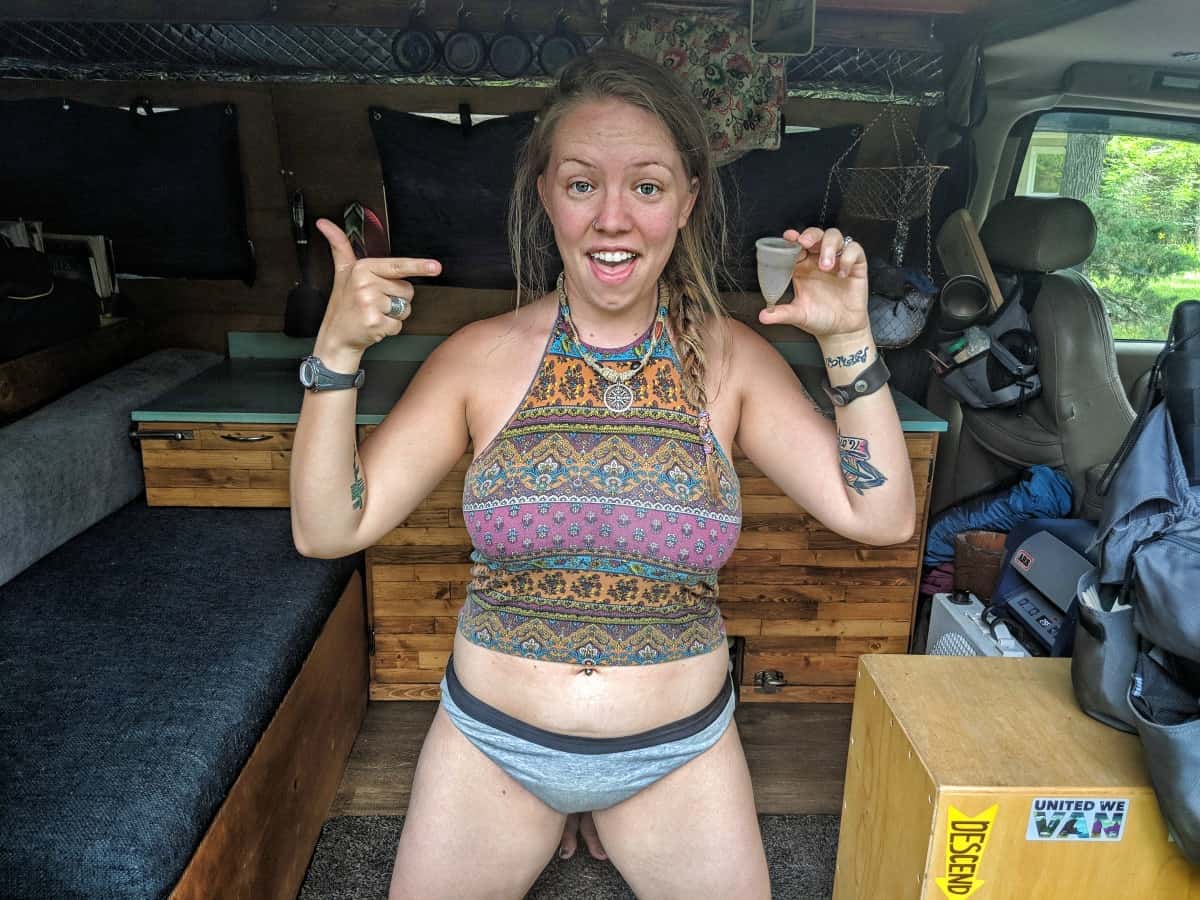
This was probably one of the most important transitions I (Jayme) decided to make before we hit the road. In our society, women are told from the very beginning of our menstrual journey to use pads or tampons. I can’t speak for all women, but between my parents, my school, and my friends, no one seemed to be aware of any alternatives. We all just used tampons or pads to catch our flow, and threw them away with an “out of sight, out of mind” attitude.
But tampons (and pads) are incredibly wasteful. The average woman uses about 20 tampons per cycle – which equates to 240 tampons per year or 9,600 tampons over 40 years of menstruation. That’s a lot of bloody waste (pun obviously intended)! Tampons also cost money, are packaged in plastic and individually wrapped, and contain many chemicals that are harmful to a woman’s body.
Menstrual cups like the Diva Cup flip this on its head entirely – and create a beautiful learning experience that lets you truly know your body in an entirely different way.
Yeah, maybe there’s that “Ew! Gross! Disgusting!” factor in the beginning – but most of vanlife’s transitions can be pretty gross and yucky. But I promise that this will fade almost immediately. After my very first cycle using a Diva Cup, I was immediately comfortable with it and I was so grateful that I had transitioned.
I also want to add that a lot of the “Ew! Gross! Disgusting!” mindset is trained behavior. We are conditioned to think this way about our own bodies – which is kind of a shame. Menstruation is natural – you can’t turn it off! We shouldn’t be grossed out by it or afraid of it – it’s a beautiful cycle our body flows through each month. We should embrace this time instead of feeling grossed out or embarrassed!
Thinx Underwear: Another Great Tampon/Pad Alternative
Another awesome tampon or pad replacement is Thinx underwear. Thinx are super absorbent, and they come in several styles from thongs to boyshorts, and even leotards. Depending on the style, Thinx can hold the equivalent of two tampons!
I personally do not use Thinx as a substitute for tampons, but I have started wearing them a few days before I’m supposed to start my period. That way, whenever I do start I don’t have to worry about rushing to the bathroom. I am able to have a relaxed mindset, understanding that I’m not ruining a pair of underwear – this is what Thinx are made for! Then, whenever I’m able I can excuse myself to the bathroom and slip in my Diva cup.
8. Buy in Bulk and Use Your Own Containers

Many grocery stores and food co-ops have bulk sections where you can load up on grains, beans, nuts, coffee, spices – and sometimes even stuff like honey, olive oil, vinegar, and Dr. Bronner’s.
Shopping in the bulk section is already much less wasteful (and much more economical) than buying pre-packaged items, but you can take it even further and completely eliminate plastic by using your own containers. We prefer glass Ball jars since they’re available in a variety of sizes, and are easy finds at thrift stores.
Some stores have the tare weight of standard-size jars programmed into their scales. But if you’re walking into a store for the first time it’s a good idea to speak with a clerk in case they need to weigh your containers before you fill them up.
9. Buy Meats and Cheeses from the Deli Counter

Avoiding the piles of meat and cheese wrapped in plastic and styrofoam packaging is an easy way to reduce your waste at the grocery store. Instead, fulfill your animal protein needs at the deli counter, where you can get hunks of meat and cheese fresh from the case. And for totally waste-free shopping, try bringing your own containers into the store and having them put your items in that.
10. Dump the Detergent and Use Soap Nuts
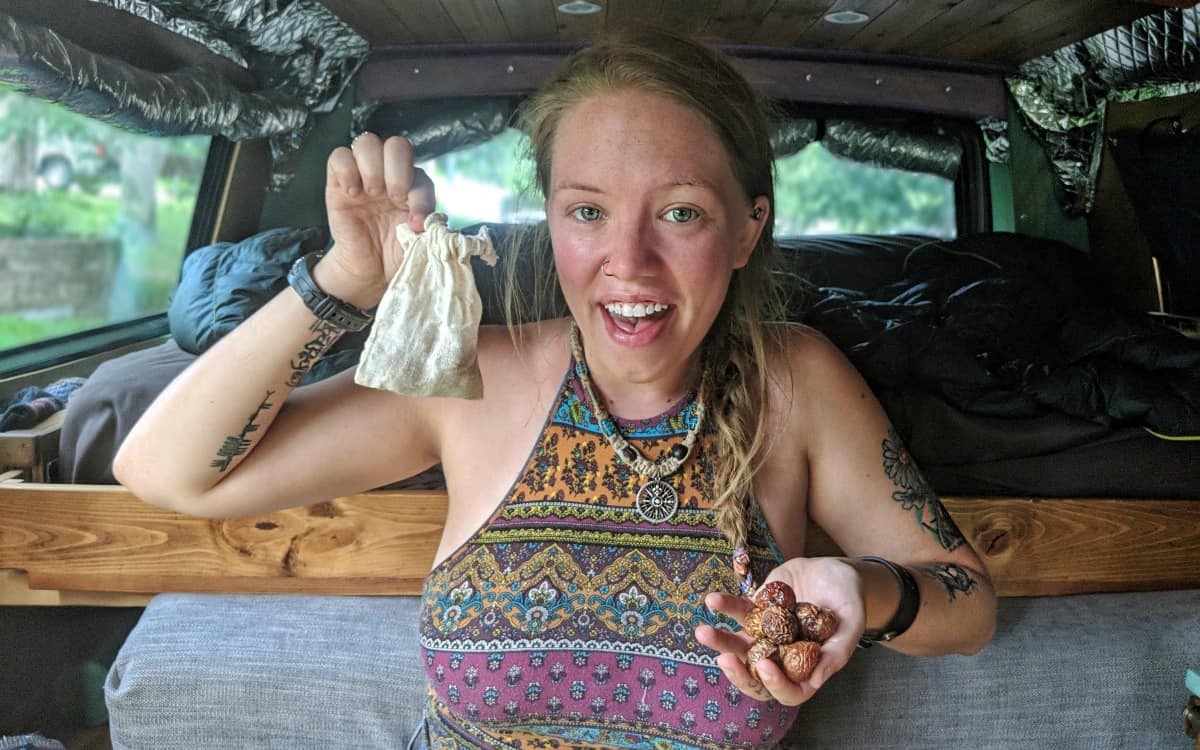
We just started using soap nuts recently. Technically berries, soap nuts grow on the mukorossi tree, and they’re pretty much a miracle product. They’re all-natural, hypoallergenic, and environmentally friendly. And they can replace just about any cleaning product you can think of, from laundry detergent to dish soap.
The husk of the soap nut contains saponin, which is a natural surfactant. Surfactants lower the surface tension of water, allowing it to more easily penetrate and remove dirt and grime. But unlike the toxic chemical surfactants found in most laundry detergents, soap nuts are completely non-toxic – which means you’re not sending nasty chemicals down the drain to contaminate the water supply.
Using soap nuts to wash your clothes, your dishes, your dogs, your hair, and even your van, has many benefits as far as reducing waste. Soap nuts are a natural product, so there’s no industrial process required to produce them. They also typically come in cardboard boxes or fabric bags, so there’s no plastic containers to dispose of.
This all sounds too good to be true, but we can assure you that soap nuts work wonders. So far we’ve only used them to do our laundry, but our clothes come out completely clean and smelling very fresh. As soon as we’re done with our current bottle of biodegradable camp soap, we’re going to try washing our dishes with homemade soap nut detergent.
You can buy soap nuts in a kit that includes the muslin bags you’ll need for many cleaning tasks, or you can buy them in bulk for much cheaper.
11. Make it Instead of Buying It
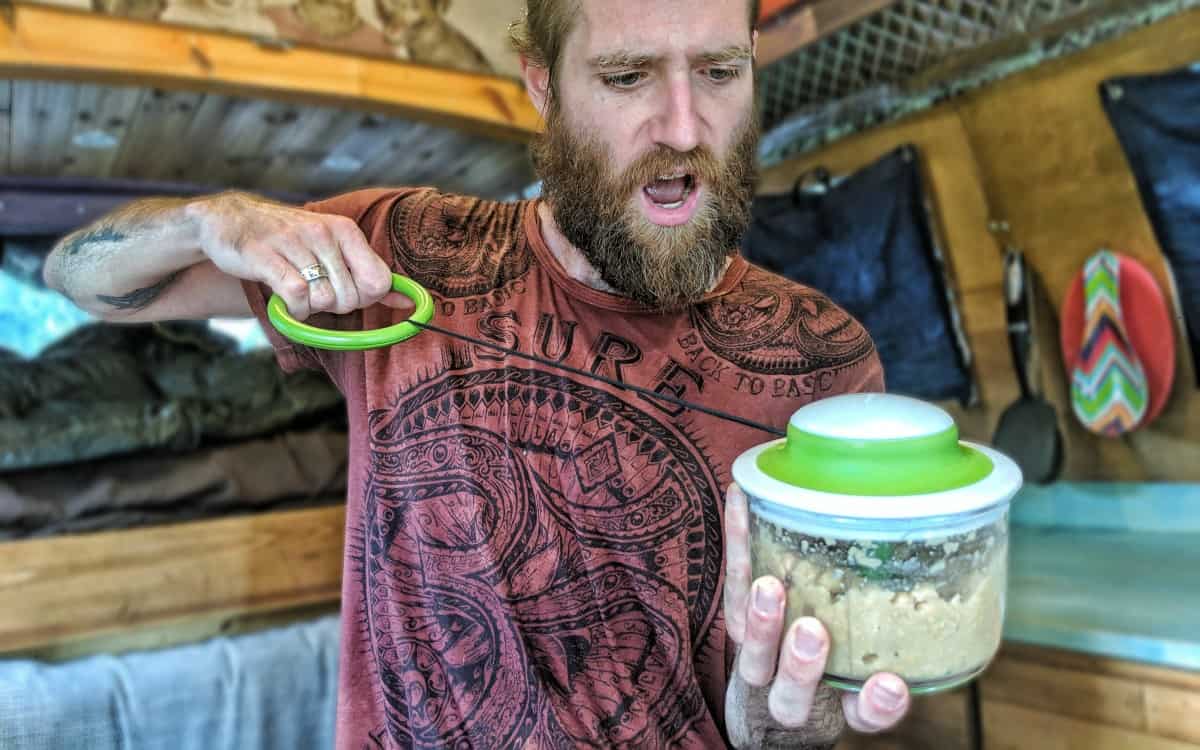
In today’s world it’s undeniably difficult to avoid plastic packaging, especially for food and personal care items. Almost everything comes in plastic containers, from hummus to shampoo.
But that doesn’t mean you have to buy into it. Many of these items you can make yourself – which not only eliminates wasteful packaging, it can save you money too.
Instead of buying that chemical-laden shampoo in a plastic bottle, whip together some homemade natural shampoo. Instead of buying tubs of delicious hummus or guacamole, make your own.
Not only is this less wasteful, it can also be more rewarding. There’s something thoroughly enjoyable about consuming something you’ve made yourself – and it’s incredibly empowering knowing that you don’t need to rely on a wasteful system to fulfill your personal needs.
John’s Dank Garlic Hummus Recipe
Can’t stomach the idea of weening yourself off of Sabra? Try out this recipe for awesome homemade hummus, and we promise you’ll never go back!
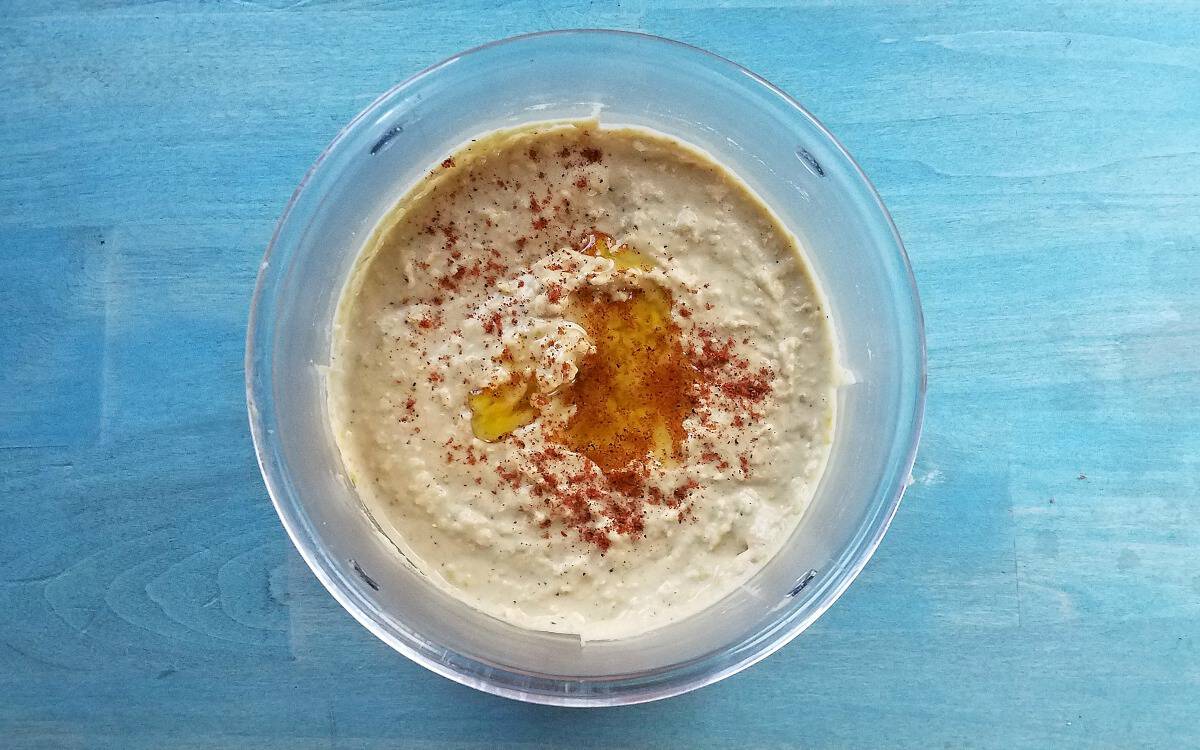
Ingredients
- 1 16-oz can of chickpeas, drained
- 1-2 garlic cloves, finely chopped
- 1/4 cup tahini
- 3 Tbsp extra virgin olive oil
- Juice from 1/2 lemon
- 3/4 Tsp sea salt
- 1/2 Tsp black pepper
- 1/2 Tsp cumin
- 2-3 Tbsp water
Directions
Combine all ingredients and puree with a hand-powered food processor, blender, or mash with a fork. Add water little by little until you reach your desired consistency.
Drizzle with olive oil and serve with chips, rye crackers, or sliced veggies!
12. If It ONLY Comes in Plastic – Get the Big One!

In a perfect world there wouldn’t be any plastic packaging. We would all buy everything with our own reusable containers, or make things ourselves. But there are some products that are nearly impossible to find not in plastic packaging, and at the same time are not simple to make yourself.
If you find yourself in a scenario where the only option is a plastic container (like, say, yogurt) – then get the big tub instead of the small single-serving items.
Larger containers have less plastic and are overall less wasteful than single-serving containers. You can easily reuse a yogurt container for bulk food storage, for example, but there’s not much you can do with single-serving yogurt containers other than dispose of them.
13. Compost Your Food Scraps

We’re big fans of composting. We had a huge compost bin back at our old house, and because of that we produced very little trash. But we’re still trying to crack the code on the best way to compost in a van – especially since most of our “trash” these days is food waste.
Creating a vanlife-friendly compost situation is on the agenda. We’ve found some instructions for getting a basic composting situation together, and we’ve also read that vermicomposting works particularly well for small spaces.
We recently stumbled upon a cool little app called ShareWaste, which essentially connects you, the aspiring composter, with people in the area that have a compost pile where you can throw your food scraps. We haven’t tried it out yet, but it’s an intriguing idea. ShareWaste is available for both iPhone and Android.
We’re still trying to figure this one out, so if you have any experience or ideas for composting in a van or RV, let us know in the comments!
Transitioning to Waste-Free Vanlife Is Possible – and Necessary
The idea of being completely waste free may seem daunting at first. But even if you only take a few of the steps we’ve outlined here, it will have a HUGE impact. And one small step leads to another, which leads to another, and another. Before you know it you’ll be generating far less waste, and what once seemed like a difficult burden will be second nature.
If vanlifers agree on anything it’s this: the typical way of doing things just doesn’t work for us. One big reason we decided to sell our belongings and live this lifestyle was so we could create a life that’s more sustainable – both in the sense of our own time, happiness, and sanity, and in the sense of our overall impact on the environment.
Life in general – but vanlife in particular – is a continual state of becoming, of creating the life that we truly desire for ourselves and those around us, rather than just accepting what’s fed to us. If we all take steps to reduce our waste, we’ll not only have a direct impact – we’ll also inspire those around us, and perhaps influence the system to change.
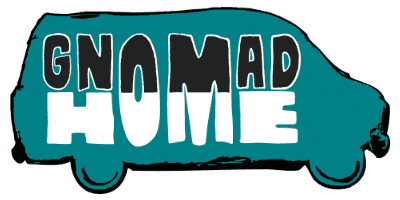
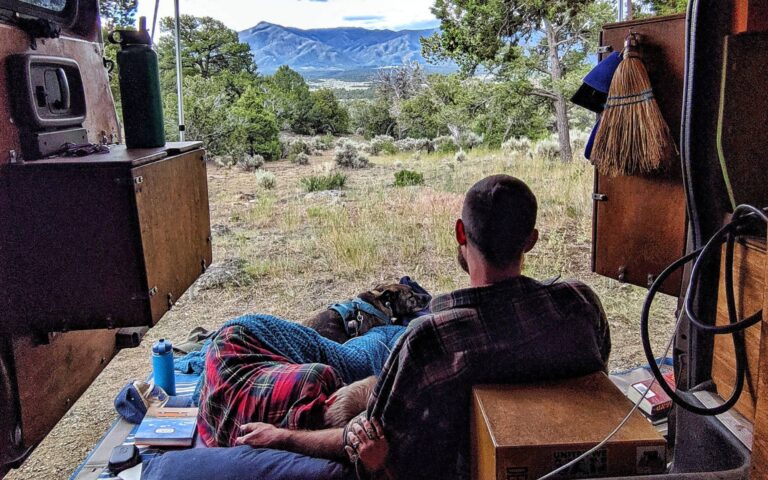
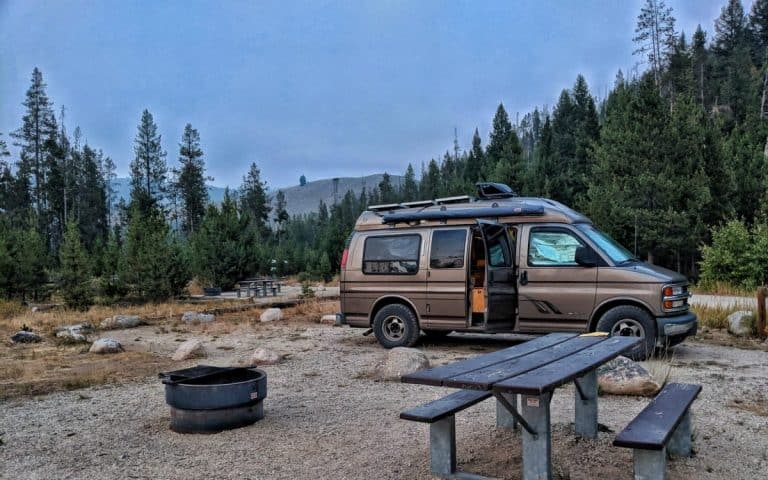
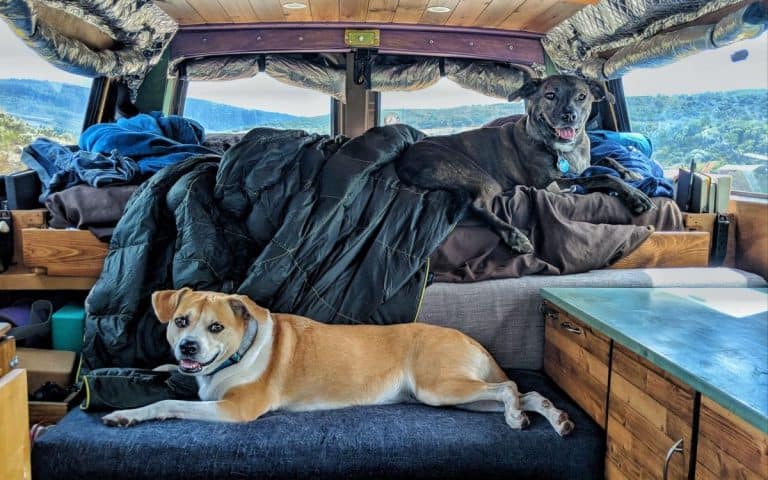

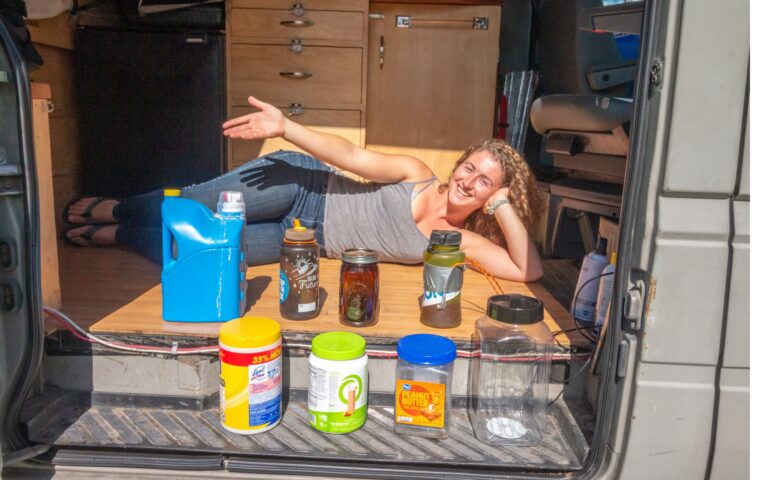
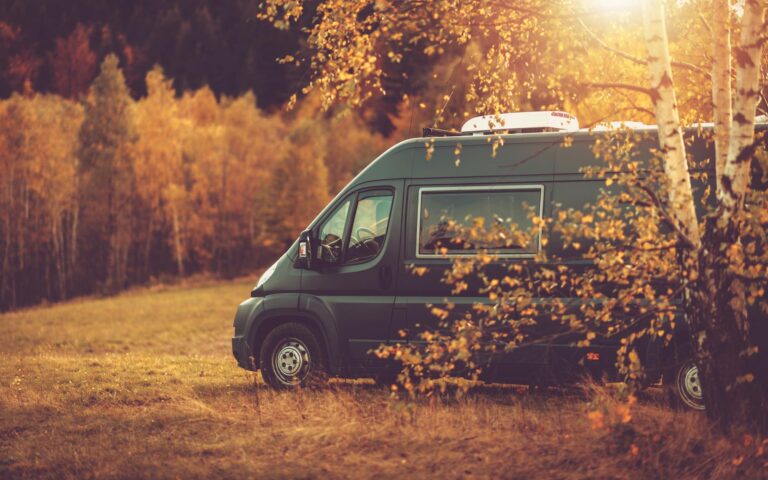
Hello! I’d like to add to the Thinx underwear point. There are many other types of period underwear as well. I use Ruby Love.
We’ll be setting out for the summer in July and will be trying this indoor compost bin method that uses a simple bankers box. I hope it works – I’m allocating space for the box in my build! https://www.nytimes.com/2020/05/06/climate/new-york-coronavirus-composting.html
Hi Rachel, that looks like an interesting idea! We’d love to hear how it goes, and may have to try it ourselves.
~John
You guys are awesome! I am proud we got to number 8 on the list before I had to read for tips. We are just about to transition to van life and I am wondering if you ever solved the composting problem? We normally sort all our trash and composting is a huge part of that and I am unsure about how we can maintain this for van life. Would love to hear if you made any progress!
Cheers,
Bree Savage
Hi Bree, glad you enjoyed the post! We haven’t solved the composting problem yet, which is definitely a pain since food waste is the majority of our trash at this point. We do use corn-based compostable trash bags, which we hope will allow everything to break down faster at least. We’re going to experiment with some other composting solutions this year, and we’ll be sure to update this post.
~John
I believe you can add veggie scraps to your composting toilet.
Awesome, thanks for the tip Kathleen!
I’m not sure if you realize but the #1 thing you can do for the environment is go Vegan. Animal products create the most waste (more so than fossil fuels). An article regarding the detrimental effects of animal agriculture was published in 2010 by the WHO. It is the leading cause of deforestation in the Amazon.
There are so many reasons to choose a conscious life; health, planet and of course animals. Perpetuate peace not violence.
Hello, thanks for commenting! We are well aware of the horrific effects of industrial agriculture, which includes the meat industry and also industrial farming in general. We tend to eat vegetarian most of the time, and we are conscious about where we source our foods. We are also very conscious of fulfilling our nutritional needs from whole foods rather than supplements (especially since we are planning to have children in the near future), thus we’ve determined that a vegan diet does not make sense for us. We share your concern about the harms of industrial agriculture and we support your… Read more »
Hi there! I recently stumbled across your site and I LOVE your waste free ideas! I’ve used Diva cups before and they are so amazing. I want to try the soap nuts too. Do the soap nuts have a scent? Thanks!
Hi Elyse, the soap nuts don’t have any scent as far as we can tell. After doing laundry our clothes just smell “clean.” Hope that helps!
~John
Wow! Really Nice Boobs!
.
I’m presenting on Pitching Paper Ditching Disposables to a grassroots Birth connections group next month! I make reusable home items and we cloth diaper! Thank you for sharing this article which I plan to share with the group!
Thanks Lacy, glad you found this helpful! There are so many little things we can do that cumulatively have a huge impact! Best of luck!
The older I get, the more I drift towards the ways of my parents, who grew up during the depression. They didn’t waste and they reused nearly everything. They didn’t buy things they couldn’t pay cash for. Eating out was a treat and they grew their own foods whenever possible.
Thanks for these reminders that we need to return to those days of being conservators of the environment and to be self-sufficient. The benefits outweigh whatever perceived inconvenience. Love you guys!
Hi KLC, We were talking about this exact same thing recently. I remember my grandparents used to reuse coffee filters many times before they threw them out. It’s unfortunate that since then the philosophy of conservation and reusing things has taken a backseat to the latest conveniences and endless single-use disposable items. But there’s a real growing awareness of the benefits of self-sufficiency and shrinking the amount of waste we generate that’s really cool to see!
Be well,
John
Really informative thank you! Definately going to give the Bees wrap and soap nuts a try!
Thanks Kat! We highly recommend both of those – we’re really excited to start making soap nut detergent and using it to wash our dishes, not having to buy camp soap could be a game changer 🙂
~John
Great tips guys. We try to cut down on our waste and consumption. These are some great ideas.
Hope to see y’all out here somewhere.